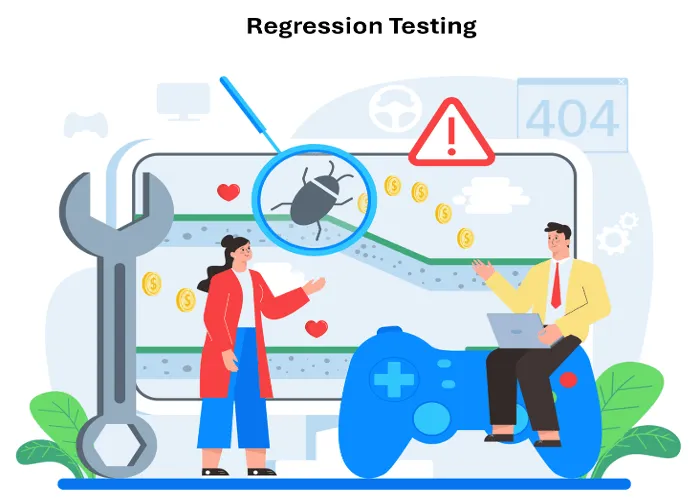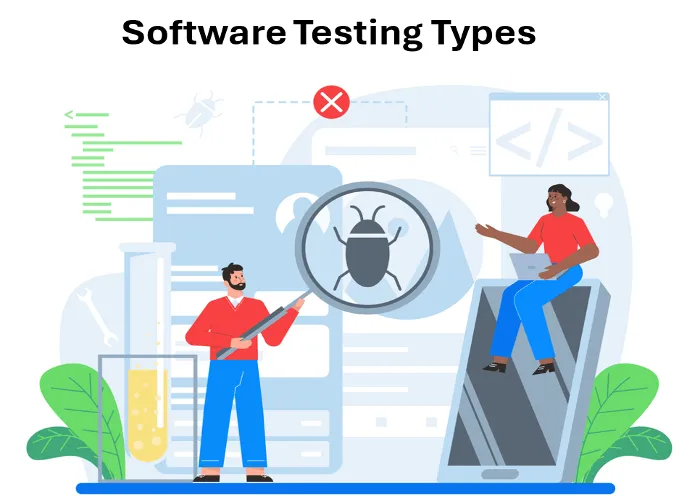Positive Testing in the STLC Best How To Techniques

Introduction
Quality Control (QC) is the cornerstone of software development, ensuring the final product meets the desired functionality standards, reliability, and user experience. Traditionally, QC testing has been perceived as a process of identifying defects and weaknesses in software. However, embracing a more proactive approach is known as positive testing. In this blog, we will cover the essence of Positive Testing, its principles, methodologies, and practical implementation strategies.
What is Positive Testing?
Positive testing is a forward-thinking and strategic approach utilized to validate the functionality of software applications. Unlike conventional testing methods that center on pinpointing defects and vulnerabilities, positive testing prioritizes the validation of anticipated behavior. This methodology revolves around confirming that the software operates according to its specifications and requirements across diverse scenarios.
Moreover, by concentrating on affirming expected outcomes, positive testing contributes to the enhancement of software reliability and performance. This involves creating test cases that align closely with the intended use cases and functionalities of the software. Through meticulous planning and execution, Positive testing ensures that the software meets user expectations and delivers a seamless user experience.
Furthermore, positive testing fosters a proactive mindset within development teams, encouraging them to anticipate potential issues and address them preemptively. By focusing on validation rather than just defect detection, this approach promotes early identification and resolution of discrepancies, thereby minimizing the likelihood of defects manifesting in production environments.
Overall, positive testing serves as a proactive assurance mechanism, instilling confidence in the software’s capabilities and bolstering its overall quality. Through its emphasis on validating expected behaviors, this methodology plays a crucial role in ensuring that software systems meet the standards of reliability, functionality, and user satisfaction.
Testing Objectives
Validation of Functionality: By using positive testing, every function and feature of the software is thoroughly examined against expected requirements to confirm proper performance in different scenarios.
Positive Testing Goals:
The main aim is to produce precise and expected results by using carefully prepared valid input test data. Positive test cases cover various scenarios to ensure consistent and accurate outcomes.
Early Defect Detection:
Positive testing uses valid input data to identify errors in a software system by comparing expected and actual behavior. Early defect detection through this approach helps minimize the effects on project timelines and budgets.
Improved Software Quality:
Improved software quality is achieved through positive testing, which helps find and fix issues before software reaches end-users. This leads to a more dependable software product and higher user satisfaction and loyalty.
Increased Confidence:
Rigorous positive testing builds confidence in the reliability and performance of the software system for both the development team and stakeholders. Furthermore, it ensures that the system functions correctly according to specified requirements, fostering trust in its integrity and usability. This confidence leads to smoother project execution and encourages stakeholder buy-in.
Time-Saving:
Positive testing provides a time-efficient way to validate expected functionalities and features of the software system by focusing on scenarios aligning with intended behavior. Therefore, this targeted approach optimizes testing efforts, accelerates the process, and allows effective resource allocation, streamlining the development lifecycle.
Positive Testing Strategies
The following are some practical strategies to foster a culture of effective software testing within an organization, emphasizing the need for a team-wide commitment to quality improvement.
By implementing these strategies, organizations can cultivate a culture of effective software testing, where quality is prioritized, collaboration is encouraged, and continuous improvement is ingrained in the team’s DNA.
Together, these strategies aim to integrate high-quality software testing into the organization’s core practices.
Set Clear Goals:
Establishing specific, measurable testing objectives provides a roadmap for the team to follow. These goals could include reducing the number of bugs in releases, improving test coverage, or enhancing the overall quality of the software.
Create a Test Plan:
A well-defined test plan is essential for effective software testing. It outlines the objectives, scope, and approach of the testing process. It also helps in identifying the resources required and setting realistic timelines for testing activities.
Creating a comprehensive test plan involves several essential steps:
- Defining the release scope requires identifying features, considering constraints, and determining the release type by addressing pertinent questions.
- Scheduling timelines involves consulting project managers, reviewing past release times, and accommodating development schedules while allowing for unforeseen delays.
- Defining test objectives entails identifying the purpose of testing, with examples provided for different testing types.
- Measuring testing progress and effectiveness involves using metrics like defect density and test coverage.
- Determining the test strategy helps to determine the cost and effort of testing, deciding which features will be included in the testing scope (planned for testing) versus those that will not be included (not planned for testing).
- Designing a test strategy involves identifying testing types, documenting risks and issues, outlining test logistics, establishing test criteria, and planning the test environment and data, all essential for ensuring precise and robust testing.
Each step is crucial for creating a test plan that effectively guides the testing process.
Write Effective Test Cases:
Test cases include detailed instructions that specify the steps to be followed and the expected outcomes for each test scenario. Using test cases ensures that testing is performed consistently and thoroughly. It also helps in tracking the progress of testing activities.
Crafting effective test cases is pivotal for an efficient software testing endeavor, serving multiple functions such as planning, enhancing efficiency, measuring coverage, comparing results, and detecting regressions/defects. Four crucial elements guide the creation of these test cases: identifying the feature to test, outlining diverse scenarios to encompass all feature facets, selecting appropriate test data, and tailoring the testing approach based on features, scenarios, and data.
By meticulously addressing these elements, testing teams can produce well-structured test cases that significantly improve the thoroughness and efficacy of the software testing process.
Learn and Adapt:
Continuous learning is essential in the ever-evolving field of software testing. Team members should stay updated on the latest testing tools, methodologies, and best practices through training sessions, conferences, and online resources. Additionally, seeking feedback from peers and industry experts helps in identifying areas for improvement and adapting to changing requirements.
Share Key Information:
Utilize project management software and collaboration tools to enhance transparency and facilitate communication among team members. Documenting test plans, results, and issues in a centralized location ensures that everyone is on the same page and can contribute effectively to the testing process.
Prioritize Communication:
Create an open and inclusive environment where team members feel comfortable discussing ideas, raising concerns, and sharing insights. Regular meetings, stand-ups, and brainstorming sessions foster collaboration and encourage proactive communication among testers, developers, and other stakeholders.
Encourage Feedback:
Constructive criticism is crucial for identifying weaknesses in the testing process and implementing improvements. Encourage team members to provide feedback on each other’s work, test cases, and methodologies, fostering a culture of continuous improvement and accountability.
Reward Achievements:
Recognize and celebrate individual and team accomplishments in software testing. Whether it’s completing a challenging testing task, finding critical bugs, or improving overall test coverage, acknowledging achievements motivates team members and reinforces their commitment to quality.
Effective Time Management Skills:
Educate the team on effective time management techniques to optimize productivity and ensure timely delivery of testing tasks. Encourage prioritization of tasks based on their importance and urgency, minimizing distractions, and utilizing time-tracking tools to monitor progress.
Promote Cross-Functional Training:
Offer opportunities for testers to develop skills beyond traditional testing roles, such as programming, automation, and domain-specific knowledge. Cross-functional training enhances versatility, encourages collaboration across teams, and broadens testers’ perspectives, ultimately improving the quality of the testing process.
Use Automation Tools:
Implement automated testing frameworks and tools to streamline repetitive tasks, increase test coverage, and improve overall efficiency. Automation frees up testers to focus on more complex scenarios, reduces human error, and accelerates the feedback loop, leading to faster releases without compromising quality.
Foster a Sense of Community:
Cultivate a supportive and inclusive team environment through team-building activities, mentorship programs, and social events. Building strong relationships and camaraderie among team members fosters collaboration, boosts morale, and enhances overall productivity.
Adopt Industry Best Practices:
Adhering to recognized industry standards and methodologies, such as Agile, DevOps, and Continuous Integration/Continuous Deployment (CI/CD), to ensure consistency and reliability in the testing process. Following established best practices helps maintain credibility, fosters trust with stakeholders, and improves the overall effectiveness of software testing efforts.
Offer Continuous Education Opportunities:
Provide ongoing learning and development opportunities for testers to enhance their skills and stay abreast of emerging trends and technologies. Investing in workshops, certifications, and professional development programs demonstrates a commitment to employee growth and ensures that the team remains competitive in the fast-paced software testing landscape.
Effective Test Case Design Strategies: Best practices
Test case design is a crucial step in the software testing process. It involves creating a set of test cases that will effectively validate the functionality and performance of a software application. Effective test case design strategies are essential for ensuring comprehensive testing and identifying any potential issues or bugs. The following are some best practices for test case design that can help improve the efficiency and effectiveness of your testing efforts.
1. Understand the Requirements
It is important to clearly understand the software requirements before designing test cases. This includes both functional and non-functional requirements. By thoroughly understanding the requirements, you can ensure that your test cases cover all the necessary scenarios and edge cases.
Start by reviewing the project documentation, such as the requirements specification, user stories, and use cases. If any ambiguities or gaps are identified, seek clarification from the project stakeholders. This will help you create test cases that accurately reflect the intended functionality of the software.
2. Identify Test Objectives
Test objectives define the purpose of each test case. They help testers understand what they are trying to achieve with each test and guide them in designing appropriate test scenarios. When identifying test objectives, consider the following:
Functional Coverage:
Ensure that the test cases cover all the functional requirements.
Risk-based Testing:
Identify high-risk areas of the software and prioritize test cases accordingly.
User Scenarios:
Design test cases that mimic real-world user scenarios to validate the software’s usability.
Boundary Conditions: Include test cases that test the limits and boundaries of the software’s functionality.
3. Use Test Design Techniques
Test design techniques are systematic approaches to designing test cases. They help ensure that test cases are comprehensive and cover a wide range of scenarios. Some commonly used test design techniques include:
Equivalence Partitioning:
Divide the input domain into equivalent classes and design test cases for each class.
Boundary Value Analysis:
Test the boundaries and limits of input values to identify any issues.
Decision Table Testing:
Create a decision table to capture different combinations of inputs and expected outputs.
State Transition Testing:
Design test cases to validate the transitions between different states of the software.
By using these techniques, you can ensure that your test cases are well-designed and cover a wide range of scenarios, increasing the chances of finding defects in the software.
4. Keep Test Cases Simple and Independent
When designing test cases, it is important to keep them simple and independent. Each test case should focus on testing a specific functionality or scenario, making it easier to identify and isolate issues.
Avoid creating complex test cases that test multiple functionalities at once. This can make it difficult to pinpoint the cause of a failure if the test case fails. Instead, break down complex scenarios into smaller, independent test cases that can be executed and debugged individually.
5. Prioritize Test Cases
Not all test cases are created equal. Some test cases are more critical than others and should be given higher priority. Prioritizing test cases helps ensure that the most important functionalities are thoroughly tested.
Consider the impact and likelihood of failure when prioritizing test cases. High-impact functionalities that are critical to the software’s core functionality should be tested more rigorously. Similarly, test cases that cover rare but high-risk scenarios should also be given higher priority.
When To Conduct Positive Testing
Positive testing is a pivotal phase in the software testing process, typically conducted when the application reaches a state deemed ready for testing. Once the software build is considered stable and functional, positive testing serves as the initial step in validating its expected behaviors.
The execution of positive testing marks a critical milestone in the testing lifecycle, signaling the readiness of the application for more comprehensive testing activities. Once positive testing is completed, testers can proceed with executing other planned scenarios, such as negative testing.
The positive testing phase, conducted upon the readiness of the build, is often referred to as Smoke testing. This serves as a quick verification process to ensure that the essential functionalities of the application are operational and meet the predefined acceptance criteria. Other terms used to describe this initial phase of test execution include build verification testing, sanity testing, or quality gate testing.
Positive testing serves as the foundational step in the overall test execution process, setting the stage for subsequent testing activities and providing essential feedback on the stability and functionality of the software.
Positive Testing Techniques
Positive testing uses specific techniques designed to effectively validate the expected behavior of software functionality.
The two commonly used techniques for positive testing are Equivalence Partitioning and Boundary Value Analysis.
Equivalence Partitioning
Equivalence partitioning (EP) is a method that divides test input into distinct partitions, each representing a range of valid or equivalent inputs. A partition containing valid values is called a valid partition, which is used for positive testing purposes.
EP focuses on coverage of items known as equivalence partitions. To achieve 100% coverage using this technique, test cases must include all identified partitions, including invalid partitions, ensuring each partition is covered at least once. Coverage is quantified by calculating the percentage of partitions exercised by at least one test case, divided by the total number of identified partitions.
EP Example:
If a field only accepts ages between 20 and 40, valid partitions could include ranges such as 20 to 24, 25 to 29, 30 to 35, and 36 to 40. Invalid partitions include less than or equal to 19 and greater or equal to 41.
When using the equivalence partitioning technique for positive testing, all of the test data is chosen from within each of the 4 valid partition ranges.
Boundary Value Analysis
Boundary Value Analysis (BVA) is a technique based on exercising the boundaries of equivalence partitions. Therefore, BVA can only be used for ordered partitions.
The minimum and maximum values of a partition are its boundary values. In the case of BVA, if two elements belong to the same partition, all elements between them must also belong to that partition.
BVA focuses on the boundary values of the partitions because developers are more likely to make errors with these boundary values. Typical defects found by BVA are located where implemented boundaries are misplaced to positions above or below their intended positions or are omitted altogether.
BVA Example:
If a field accepts only ages between 20 and 40, all valid and invalid boundary values used for testing the field would include the following: 19, 20, 21, 39, 40, and 41.
When the input test data only includes values within the valid boundary range limits, positive testing is used to test the field.
Advantages of Positive Testing
- Positive testing streamlines the testing process by focusing exclusively on valid and expected input scenarios, thus reducing overall testing time.
- It guarantees fulfillment of all specified requirements, ensuring the final product functions flawlessly as designed.
- By identifying faulty builds early on, Positive Testing conserves testing efforts and expedites the development cycle.
- The approach employs a predefined set of test cases, ensuring a systematic and efficient verification process.
- Through Positive Testing, the iterative enhancement of code quality is a natural outcome, fostering continuous improvement.
- Compared with alternative testing methods, Positive Testing consistently yields a lower incidence of defects, highlighting its effectiveness. 7.This method excels in rigorously assessing the expected behavior of an application, providing reliable confirmation of its operational excellence.
Disadvantages of Positive Testing
- Positive Testing deliberately focuses on executing test cases that are expected to pass.
- It strategically avoids the exploration of product/application errors that occur outside of these designed scenarios.
- Properly assigning valid data to each test case is crucial, as this guarantees comprehensive coverage.
- Crafting positive test cases for extensive datasets demands a high degree of precision and expertise.
- While this method doesn’t guarantee complete product accuracy, it serves as an effective measure of expected functionality.
- Despite being less comprehensive than Negative Testing, Positive Testing is vital in affirming software behavior under normal conditions.
Conclusion
Positive testing is the first step in the testing process, laying the groundwork for subsequent testing levels and activities. It validates the positive path of an application, ensuring that basic functionalities operate as intended and meet user requirements. While other testing types, such as negative testing, are essential for ensuring bug-free and stable software, positive testing serves as a foundational step in the overall testing process, providing valuable insights into the functionality and reliability of the software.




🗨️ Reader Comments